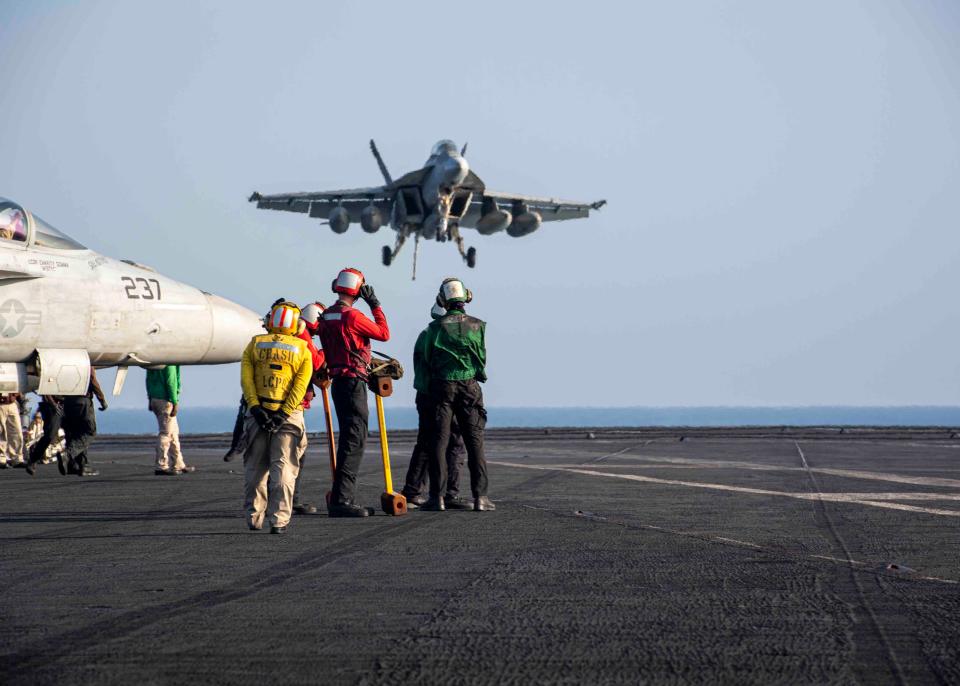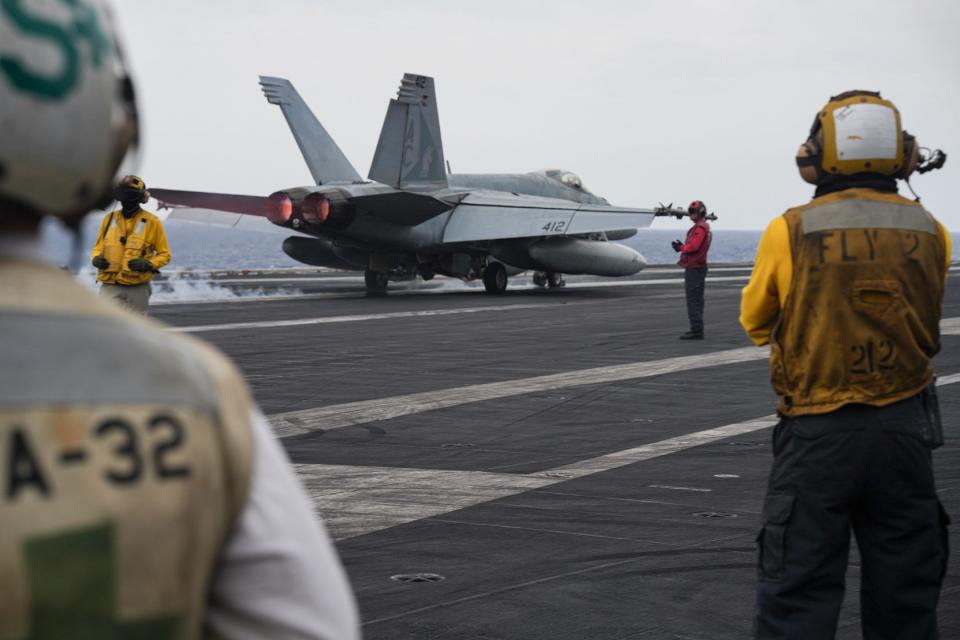A US Navy fighter squadron scored a series of firsts fighting the Houthis from an aircraft carrier in the Red Sea
A US Navy fighter squadron that battled the Houthis scored a number of historic firsts during the fight.
The squadron flew combat missions from the aircraft carrier USS Dwight D. Eisenhower.
Its pilots intercepted Houthi drones and also conducted strikes into Yemen.
A US Navy fighter squadron that was recently attached to the aircraft carrier USS Dwight D. Eisenhower scored several historic firsts while flying combat missions against the Houthis.
Strike Fighter Squadron 105, also known as VFA-105, was stationed aboard the Eisenhower during a restless, nine-month-long deployment that saw the Navy defend merchant shipping lanes in the Red Sea and Gulf of Aden from relentless Houthi missile and drone attacks.
The squadron, which flies the F/A-18E Super Hornet fighter jet, flew various missions between December and June, during which pilots intercepted dozens of Houthi one-way attack drones and carried out strikes against the Iran-backed rebels in Yemen.
During its deployment, the fighter squadron — nicknamed the "Gunslingers" — racked up a number of firsts, the Navy revealed this month.

For instance, VFA-105 became the first naval squadron to use the AIM-9X missile in combat, scoring a direct hit on a Houthi drone that was targeting merchant vessels. The infrared-seeking AIM-9X is the newest variant in the Sidewinder short-range air-to-air missiles.
This fighter squadron was also the first to fire AGM-88 HARM missiles from an F/A-18E in combat. These air-to-surface missiles are made to take out hostile air defenses by targeting their radar systems. Additionally, VFA-105 used the Joint Standoff Weapon-C Variant, a precision-guided munition that can strike surface targets, for the first time in combat during this deployment.
Eisenhower's carrier air wing, which includes VFA-105, released 420 air-to-surface weapons and nearly 60 air-to-air missiles during the monthslong Middle East deployment, and it logged more than 31,400 hours of flight time across almost 14,000 sorties.
Other squadrons in the carrier air wing also made history during this combat deployment. For example, a naval aviator flying a F/A-18F Super Hornet became the first American female to score an air-to-air kill, and an EA-18G Growler electronic-warfare aircraft, as a platform, received its first ever air-to-air kill.

The Dwight D. Eisenhower Carrier Strike Group — which consisted of the carrier Ike, several destroyers, and a cruiser — left the Middle East in June, and VFA-105 returned to its homeport in Virginia earlier this month. The Navy is replacing these assets with another carrier, the Truman, and additional warships.
"After an unprecedented deployment, the Sailors of VFA-105 look forward to returning to their loved ones, reconnecting, and enjoying some much deserved rest," the strike group said in a July 14 statement.
"For nine months straight, the entire Gunslinger family, those deployed and those back home, banded together to fight evil and save innocent lives," said Cmdr. Travis Amerine, the squadron's commanding officer.
"I could not be more proud nor more humbled to have been a witness to them all," he added.
Read the original article on Business Insider

